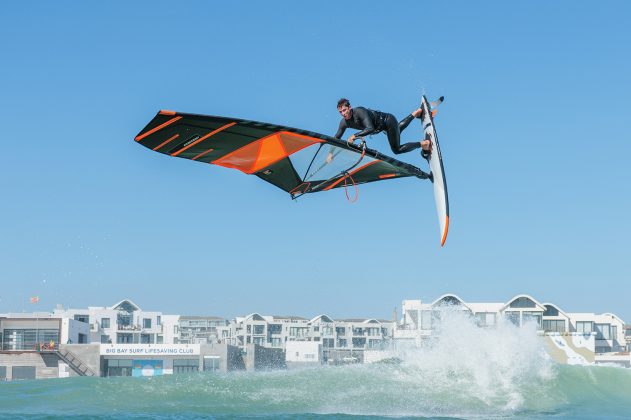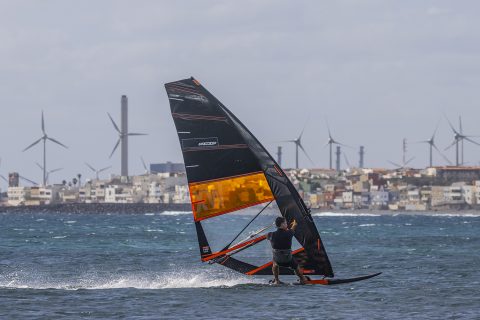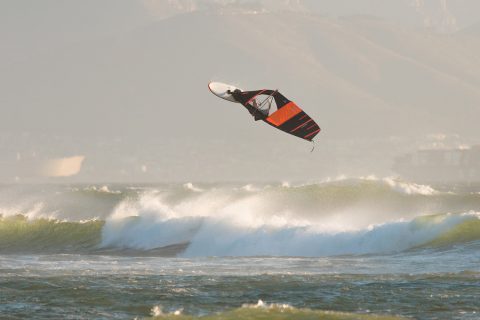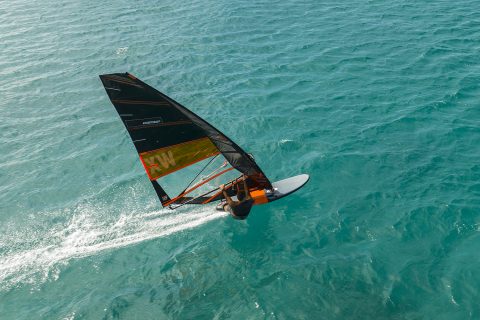JOHN SKYE: BATTENOLOGY
Battens are fundamental to a sail’s performance but how much do you know about them? RRD sail designer John Skye gives us the benefit of his knowledge.
PHOTOS – Samuel Tomé, pozowindsurfphotography // WORDS – John Skye
If the mast is the spine of the sail, then battens represent the skeleton, hence they can drastically change how a sail feels and performs. Sail design and testing is an incredibly complex puzzle, mostly because of the number of variables that can affect the rig. The actual sail, the piece of shaped cloth in the middle, forms just one part of that puzzle and can offer completely different characteristics depending on what mast it has, how much tension there is on the downhaul and outhaul, and also by which battens are inside, so as a sail designer the aim is to combine all those variables into the perfect finished product, that a customer can walk into a shop and buy. For compatibility reasons, both forward and backwards, we tend to leave the mast fairly constant, unless there is a good reason to change direction. Therefore the actual sail design is where we can implement the biggest changes and finally the battens are where we can fine-tune everything to perfection; the options are endless.
- John Skye full blast
Race sails
Race sail battens are especially important and for the top pros they represent one of the biggest tuning options available. With PWA rules specifying that the sails have to be standard production, the options for tuning (other than rigging changes) basically come down to masts and battens. Within the spectrum of battens there are limitless options. Race battens are mostly made with 2 or 3 parts. A fairly standard 8 mm front tip, with the back section made of a wider diameter tube or tubes, that can be glass fibre (softest), through to 100% carbon (stiffest) and of course everything between, like 50% carbon for example. We even have vario-carbon content that for example starts with 10% carbon at the front and slowly transitions to 100% at the back. Adding to these options, you also have to consider the length of the tube. The longer the tube, the more the shape of the sail gets pushed and held forward. Finally you can vary the tip, both in thickness and in the length of the taper, to again change the shape in the front of the sail. All of these factors mean you can change how the sail feels massively, with how much power you have and the position that power is located in.
Compromise
The hard part of this game however is working out what you actually want to change. Like everything in windsurfing design, it comes down to compromises, so to massively simplify it there are a few rules. Glass or soft battens allow the sail to fill in more, producing more power, at the expense of control. Lots of carbon or stiff battens kill the power of the sail, but give you huge amounts of control. The position of the power can also be controlled both vertically and horizontally. Softer battens high up can raise the power point, whilst stiffer battens high up can lower it. The position of where the tube finishes can change the horizontal position of the power, giving you more or less pressure on the back hand. All these things are very personal, so as a sail designer my goal is to find something that can suit the majority of riders, but for the professionals, if they know what they are looking for, they can tune the sail perfectly and customise their sails for themselves and their style.
- John Skye flying high
Wave sails
Wave sails are pretty much the same, only the options are reduced slightly since we don’t generally use tube battens. However we can still control where the power is positioned and to a degree change the softness/stiffness of the sail and the amount of power. Again this is a very personal feeling, with some riders looking for a very neutral sail, using the board to surf the wave, whilst others prefer a more ‘drivey’ sail, using the sail to drive the board through the turns. Neither is right or wrong, it is just personal preference and like everything in windsurfing, something in the middle is normally the good option to cover everyone.
Throughout the Covid pandemic we were quite restricted with what we could work on with the sails, both with the factories closed for long periods of time, and shipping costs going through the roof. Therefore I spent more time than usual focusing on the battens and actually the results were far better than I initially would have suspected. For example on our flagship Vogue HD wave sail model we were looking to add a touch more drive and soften the sail slightly. The goal was improving its performance in more onshore style conditions, where the sail needs to work a bit more. Just with batten changes we were able to achieve a significant change, by moving the power back a fraction and also lifting it a bit higher. This was accomplished mostly by sanding the batten tips, and extending the taper further back on the batten, allowing the forward section of the sail to fill in easier, giving more shape and a softer front section. Since then I have been able to able to apply changes to the design of the sail to supplement these characteristics, for example reducing the luff curve to further soften the sail, which then after additional batten testing and changes gave an even more balanced sail.
- John Skye in action
Evolution
In the end the evolution of a sail is infinite. People often laugh when the marketing jargon talks about better low end AND better top end, but in the end that is the goal of the sail designer. Sometimes the changes are subtle, sometimes more pronounced, but the goal is always to move the sail forward bit by bit, and ideally increase the natural range of the sail.
Tension tips
The general rule for the batten tension of most sails is that the bottom battens should normally be tensioned quite heavily. Typically the battens below the boom and the one above should have enough tension to give a nice bit of shape. The top battens normally should have minimal tension. Enough to take out the wrinkles, but you don’t want to be pushing shape into them. Sometimes the very top batten can have a touch more tension to stop the leech opening too much at the top. For ultra fine-tuning you can look down the leech of the sail and use batten tension to get a nice progressive twist through the sail. More tension will lift the batten, and less will drop it, so with this control you can get the perfect twist. This is especially applicable to sails with 6 or more battens, often more ‘racey’ designs.




